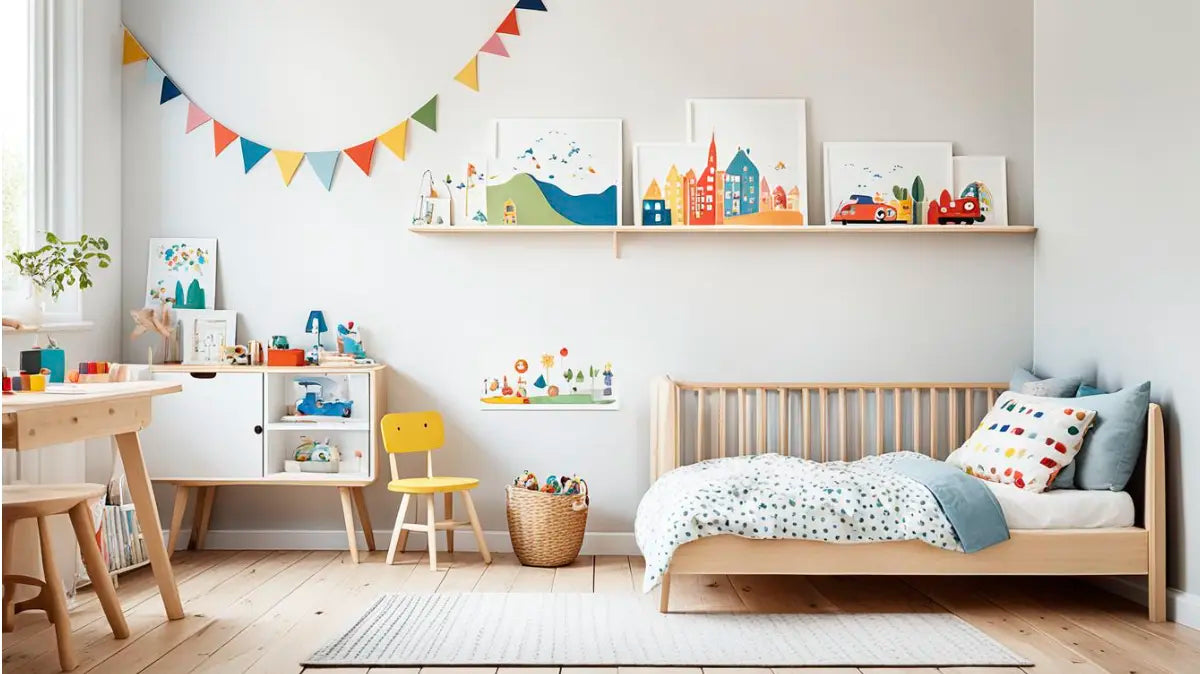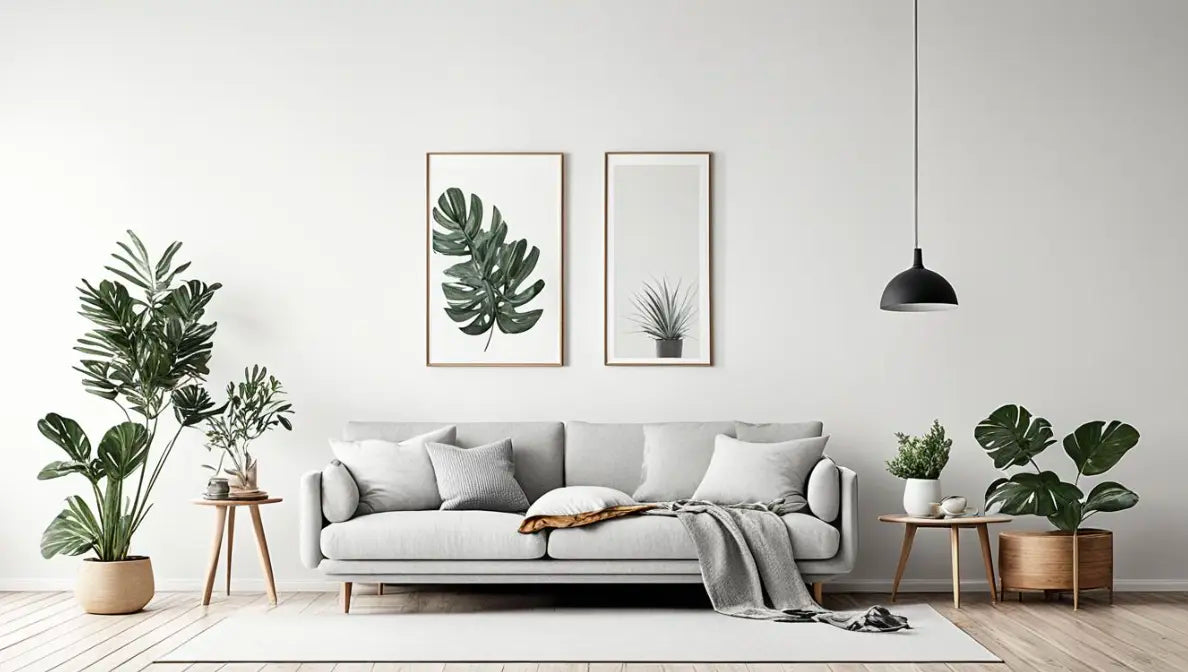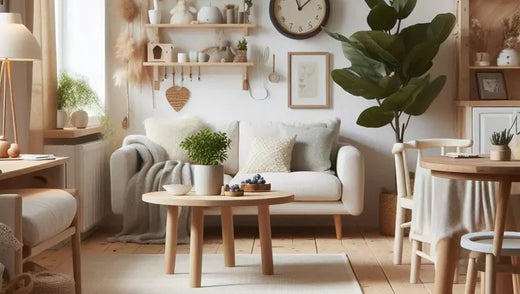In interior design statistics, as many as 65% of parents decide on the Scandinavian style in designing children's rooms, appreciating its functionality and aesthetics. The combination of Montessori style with Scandinavian furniture creates a space that is not only aesthetic, but also supports the child's development and independence .
In this arrangement, the children's room becomes a place that inspires play and learning. Scandinavian furniture is distinguished by its simple form and natural materials, which, combined with the principles of the Montessori style, such as organization and accessibility, provides the child with comfort and development in a safe environment .
How to effectively design such a space so that it is both functional and visually attractive?
What characterizes the Montessori style?
The Montessori style is a unique approach to raising children , created by Maria Montessori over 100 years ago. The main principles of this style include stimulating the child's independence and activity through learning through play.
The Montessori space is carefully designed to adapt to the needs of children, which promotes their natural curiosity and development.

Montessori rooms use functional furniture, such as desks and chairs , that are low and easily accessible to children . This helps create a safe and stimulating environment.
Montessori rooms use functional furniture, such as desks and chairs , that are low and easily accessible to children . This helps create a safe and stimulating environment.
In these rooms, it is important that all elements are carefully selected and help children discover the world on their own. The furniture is designed to support education through the functional organization of space and the availability of materials.
This style places great emphasis on simplicity, which means giving up on excessive decoration . This allows children to fully concentrate on playing and learning. The key is to arrange the books in such a way that they are visible and easy to choose, which additionally encourages reading and exploration.
The rules of order in Montessori rooms allow children free access to toys and educational materials, which in turn improves their independence and organization.
Why choose Scandinavian style?
Scandinavian style is enjoying growing interest in interior design and is gaining recognition in children's room designs. It is characterized by light, subdued colors, such as shades of white, pastel pink, blue or mint, which create a pleasant atmosphere conducive to play and learning.
Minimalism and simplicity are key features of the Scandinavian style, which means that it is worth limiting the amount of furniture and accessories in a child's room. The furniture has geometric shapes and functionality , which allows for maximum use of the available space, and natural materials , such as wood and linen, bring warmth and coziness to the interior.

The optical enlargement of the space is achieved thanks to large windows and light curtains, which affects the comfort of children. It is important to create an art corner with materials for creative play, because it supports the development of interests and the child's expression through art.
Order is a priority in this style, so it's worth teaching your little ones to take care of their space with the help of appropriate organizers and storage systems.
When arranging a children's room, it is worth distinguishing three zones: sleep, play and learning. Such a division helps to organize the reality of a little person. Scandinavian style is not only aesthetic, but also functional, which makes it an ideal solution for minimalist but warm interiors for children.
How to Design a Montessori-Style Children's Room
Designing a Montessori-style children's room is based on several key principles that support a child's independence and allow for effective organization of space. It is worth noting how important it is to create an environment that allows the toddler to explore and develop.
The main principles of Montessori style design
The first step in designing a child's room is to apply Montessori design principles that encourage independence. Furniture must be easily accessible, which encourages the child to use it without adult help. Low shelves and tables allow the toddler to easily reach toys and educational materials .
The importance of space and organization
The organization of space is crucial for the proper development of a child in a children's room. It is worth dividing the interior into different activity zones, such as a place for play, a study zone and a place for rest.
Such a division makes it easier for a child to use a given area depending on their needs and interests. A well-organized room helps maintain order, which is important
in the context of Montessori principles. This helps not only in learning about organization, but also in shaping habits related to taking care of space.
Choice of colours and materials
When deciding on the color scheme for a child's room, it is worth opting for light, pastel shades. Colors such as white, gray or beige are an excellent base for further accents.
Bright colors create a pleasant atmosphere , have a positive effect on the perception of space, optically enlarging and brightening it. Such colors can stimulate the child's creativity and cognitive processes, which is important for their development.
Natural materials for children's health
Furniture and textiles made of ecological materials not only fit into the aesthetics of the Scandinavian style, but also provide comfort and safety. In addition, the use of natural materials promotes the child's health and has a positive effect on the environment . The presence of elements made of nature contributes to the creation of a cozy atmosphere in which the child can develop.
Functional Scandinavian furniture
A children's room should be equipped with furniture that will save space and adapt to the child's changing needs.
The basic elements are a bed, a chest of drawers and a desk, which can be decorated with practical details, such as drawers and shelves for toys. It is worth paying attention to small pieces of furniture, such as tables with chairs, which encourage children's activity and creative thinking.

Play and learning zone in the children's room
In every child's room, it is essential to designate a play area and a learning area that support the development and creativity of a young person. The play area should be cozy and inviting, with soft rugs, toys, and space that allows for movement and experimentation. In such an environment, a child can develop their social and motor skills, playing with peers or on their own.
The study area plays an important role in the rooms of school-age children . It should be equipped with a desk, a comfortable chair and access to books and educational materials. A well-designed study area promotes concentration and provides comfort while performing tasks. It is worth remembering that the furniture should be properly adjusted to the child's height and placed at a level that allows easy access.
When creating a children's room according to Montessori principles, it is worth paying attention to the needs and interests and organizing the space in a way that promotes independence and concentration. In addition to minimalism and natural materials, it is also important to introduce elements that stimulate creativity , such as colorful toy boxes that can serve as organizers and at the same time encourage play.
In interior design, a Montessori-style children's room can combine subdued colors with bold accents, creating a harmonious atmosphere. Natural materials , such as wood or wicker, not only provide an aesthetic appearance, but also take care of the health and safety of the toddler. The use of appropriate lighting, including light and pastel colors, promotes comfort, which is extremely important in a space for children.





